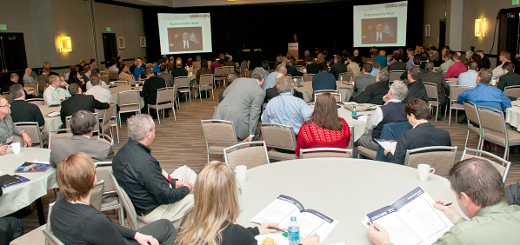Amid another transit strike, little discussion of automation
While driverless cars and smart homes often snag most of the headlines, they represent only one, particularly visible level of the ongoing automation of everyday life. As products marketed toward the individual consumer, establishing a foothold for such technologies involves a relatively traditional method of targeting or developing an interested niche and expanding from there (though, of course, legislative complexities are another matter).
When the topic shifts from changing the nature of things we own to things we use and share as a public, however, the conversation grows hazier and potential advantages more difficult to sell, figuratively speaking. Automating the public transit systems that make our largest cities navigable, for example, is a matter of large-scale urban planning, massive up-front investments and — perhaps the most challenging point — the replacement of long-standing, unionized jobs.
When New York City first began investigating the feasibility of automating several of its subway lines and decreasing the number of conductors, protests from the Transport Workers Union led to significant delays. Only in 2009 was the first automated train tested on live track (with conductors still in place) using a communications-based train control (CBTC) solution called the Trainguard MT from tech and infrastructure-giant Siemens — the same approach used in mass transit systems around the world. Despite these slow beginnings, however, New York’s Metro Transit Authority’s current timetable calls for the vast majority of subway cars and lines to be CBTC-capable by 2029.
Still, the type of growing pains encountered in New York are perhaps a part of why train automation hasn’t garnered much attention in San Francisco of late, despite the fact that for the second time in four months one of the major urban seats of technological innovation in the country finds itself in the midst of a transit strike by Bay Area Rapid Transit (BART) employees. July’s strike, which lasted four days, cost the Bay Area economy an estimated $73 million per day and put an extra 320,000 commuters onto already congested roads.
The root of the strike, which is laid out in depth by the San Francisco Examiner, is in effect a disagreement between BART and its major unions over the competing pressures of stagnating pay and a need to invest heavily in updating an aging system — a dynamic in reaction to which Gregory Ferenstein at TechCrunch investigates the feasibility of train automation and the potential long-term savings for BART through trimming down the $400 million (of a $1.6 billion budget) currently spent on labor, while increasing both efficiency and frequency.
Despite the technical feasibility of the project and the potential long-term benefits for the city as a whole that Ferenstein suggests, the automation of BART is part of a conversation that isn’t yet occurring in any serious capacity. However, as disagreements continue to develop and spill over into the type of internationally visible conflict happening in San Francisco this week — between the vested interests of long-standing unions, an increasingly numerous and demanding public, and a body of technical capabilities that will only make this brand of large-scale urban automation more and more possible — it is precisely this type of question that dense urban centers around with world will find themselves facing with an ever-greater degree of urgency.
[ photo courtesy of Steve Lambert / Flickr ]



